Come, sit at my table and I’ll tell you a story. A tale of kitchens, recipes, creativity, baking, sharing and eating packed full of love, sorrow, yearning, passion, wonder, hope, change, curiosity and joy.
It’s my life and I’m honoured to share it with you.
We start off with a young girl sticking out her tongue. She always does it when she’s concentrating. In her hands she’s gingerly holding the edge of a sheet of chocolate sponge. It’s smothered in a rich brown buttercream. Holding her breath, she rolls, rolls, rolls the layer up, saying a silent prayer that it won’t break. A few cracks are OK – those could be covered up with the yet more buttercream – but if it breaks her chocolate log will be ruined.
Chocolate logs, marble cakes, easter egg cornflake nests, brownies, flapjacks… her early kitchen creativity is all about the cake. Underneath the ‘ta-dah’ of presenting a beautiful creation is the fact that it’s really all about sugar. Too young to understand what is happening to her, she has become well and truly addicted to the comfort, escape and pleasure it offers. Sugar in the cakes and biscuits, sugar in the sweets and chocolate, heck, even heaps of the white stuff stirred into yogurt.

Then, one day, aged 20 and over 20 stone (280lb), she comes to a fork in the road. She looks ahead to see the next decade of her life. She knows what she wants; fun, laughter, dressing beautifully. She also knows that to stand a chance of getting these she has to choose differently. So, that day as a packet of chocolate treats is offered to her, she says one of the hardest ‘no’s of her life. She is no longer going to be the ‘fat’ girl.
A few months later we see a very different-looking girl, clothes baggy from the weight she’s spriting away, back at work creating with food. Like a flower pushing through the crack in a pavement, without sugar, her creativity finds another way. She’s there crunching slabs of crispbread into a pizza-base. Toppings come straight out of the 1980s-aligned, ‘fat-be-the-enemy’ diet: a popular low calorie brand of ‘cheese’, plenty of tomato paste along with onions and mushrooms. Other ‘highlights’ of this time include packets of dried ‘Slim-a-Soup’, lashings of cottage cheese, meringues, brandy snaps and boil-in-the-bag, less the 500 calorie, meals. None of this seems to phase her, the empowerment she is living by watching weight fall off is enough of a high. She’s never known anything other than being fat; seeing a beautiful new girl emerging is breath-taking.
Now we need to do some scene-changing. It’s 5 years later. You see her, half her previous size, in a kitchen of her own, wedding ring on her finger. His name is Paul and he loves the good things in life. Early dates saw shellfish, champagne and steak. Unfamiliar with the joys of sensuality, she longed to feel and revelled in it. And so you see her enthusiasm, setting a table for friends, oysters, steak and Verve Cliquot. You see her smelling, tasting, loving the delights her upwardly-mobile life is allowing her to choose. She travels, scooping noodles out of bowls with locals at plastic table-clothed restaurants in Hong Kong and eating freshly made-for-her smoothies for breakfast on the beach in Jamaica.
But there’s something missing. This life indulges her Dionysian longings but is far away from the simple, homely cook that lives in her heart. After living it for a few years, she’s desperate to break out – out of this life of money, to step off of the corporate ladder she is successfully climbing, to get away from the marriage she thought was for keeps. Such hard work – but she does it.
Now imagine her at another table – this one is in a remote Russian family’s garden. It’s a warm evening. There are locals all around her and a a jaw-dropping feast before her eyes: Pork fat cut into cubes, home-made flavoured vodka in plastic bottles, ceramic bowls overflowing with tiny, dark berries. She’s passed a dish with fist-sized golden bread rolls and bites into one to find that marinated mushrooms dance on her tongue. There’s Kraut, preserved tomatoes, potato salads and dark rye bread. Her hosts have grown, foraged or caught everything that carpets her vision – nose to tail and seed-in-the-garden to vegetable-on-the-plate, fresh, marinated, cooked, fermented. She’s never seen anything like it. It blows her mind seeing how these joyful, healthful people live and love.
Returning from what has been three months travelling, she can’t believe how impoverished ‘advanced’ western culture seems compared to the life she’s seen; how much has been lost in our ‘moving forward’. She visits the supermarket and is paralysed, unable to process the sea of polystyrene-wrapped cuts of meat and Kenyan-grown vegetables. She wants to go back; back to the place where there was sense, joy, where everything was precious, where food matters.
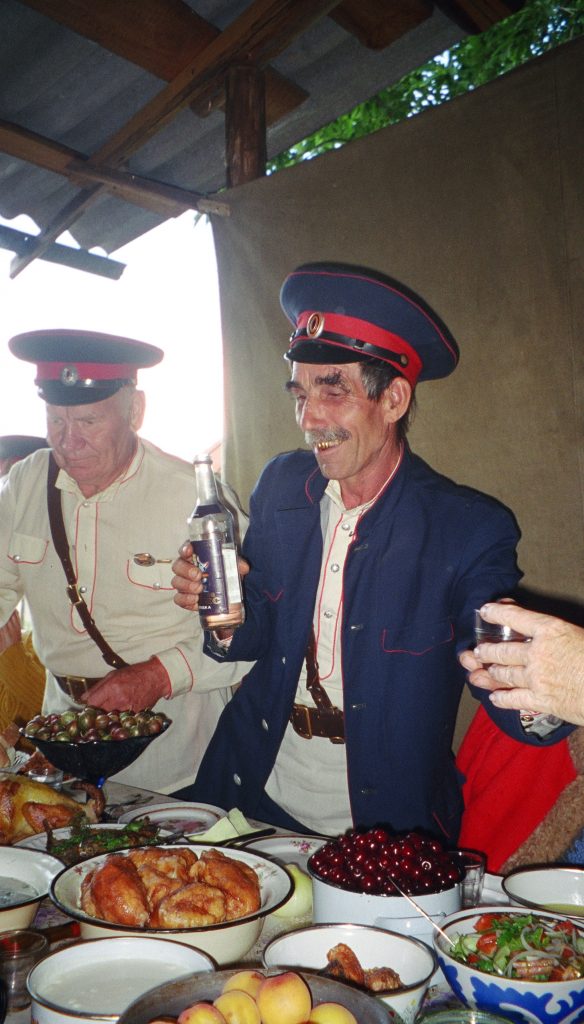
Cemented inside her is the knowledge that she can no longer continue working a job that leaves her feeling dead inside. Passion-filled moments and people exist in the world and she has to do something she loves.
So, a 50% pay cut and a brave jump to a junior job for a music charity and we find her next kitchen on the second floor of a drafty Victorian terrace house in south London. There’s a sash window you can prop open using a bit of thick card. The sun comes round about 3pm and if it’s a good day you might even want to scramble out of the window onto the roof which covers the extension of the flat below. This kitchen sees many beautiful creations. If you are there at 7am on a Saturday you’ll be irresistibly drawn by the scent of freshly baking bread, from her new machine. It is here she learns how to grow and juice wheatgrass, how to sprout nuts and seeds; here she discovers couscous and buckwheat whilst rediscovering the blessed joyful economy of a steaming bowl of oatmeal. She works the other side of the river Thames and, every morning, she makes her packed lunch: huge doorstops of the fresh bread layered with oily, salty tuna and crisp green lettuce, couscous salads with sprouts and creamy dressing, wraps with home-made hummus. And there is chocolate again, dark, with orange oil – her daily 10 mile commute across London on her beloved bicycle means it vaporises in a cloud of pedal power.
The leap in the dark to this new life seemed to be going to plan, but there is something deeper inside her growing, watching and waiting. What she will learn is that it is no good just being brave once and thinking it is done. Being brave opens things up, pushes you on, requires you to be even braver.
From this little renaissance, her life leads her on to heart-break and illness. She pieces herself back together, with the help of a long trip to Italy to study Yoga. Here, she falls in love with all things Italian, feeling more herself in the Mediterranean world than her native UK. Back home, another serious bout of illness finds her back at her childhood home, virtually unable to leave her bed for 6 months. In this period of deep fear and uncertainty comes an unwavering commitment from somewhere deep in her gut that says, “if I can just get better, I’ll move to Italy, that’s what I really want to do.”
Now there’s another man. This one is called Rob. And, standing in front of a spiraliser with a sweet potato in his hand, he has already proved himself. She’d told him back in the UK, when he was falling for her, that she wanted out of the country, and, knowing it might mean the end of their relationship he did everything he could to help her. Their courtship has been full of words, music, dreams and food. They do everything together, including eating first vegetarian, then vegan, then, just after the move to Italy, raw vegan – hence the spiraliser and the poised sweet potato. Turning the handle, ribbons of orange flesh pour out. Rob catches them in a bowl. She riffs, adding red peppers, ripened by the Italian sun, sliced mushrooms, fresh coriander and then coats it all in a unctuous dressing made of tahini, dates, garlic, dried coriander and a touch of smoked paprika. It is creamy, sweet, crunchy, gloopy and fresh and is something she always includes when feeding curious Italians a raw vegan dinner.
In between teaching English classes she meets Rob in the sunny squares of her adopted home and they share smoothies with banana, celery and spinach, salads of sprouted chickpeas and crunchy apple, whilst back home she dehydrates sprouted buckwheat to make raw pizza and juices copious amounts of fresh produce every day.


Two hours on a train south from this kitchen and you’d be on the shores of a vast, piercingly blue, lake. One that sits nestled in the smooth green hills that form the border between Tuscany and Umbria. She finds a new kitchen here and in it discovers chestnut flour. Mixed with sweet potato, she bakes it into muffins and now sits opposite Rob, at the beautiful chestnut-wood table that is the heart of the kitchen. The muffins, having filled the room with nutty, sweet smells, steam as they break, and she watches as a river of butter melts its way down the cakey inside before scooping the mix onto her tongue. Rob licks his fingers. At 35 she can’t deny that, finally, her body is asking for a child. That yearning, and 5 years without a menstrual cycle, has pushed her on, and she’s looking for answers in food, answers that’ll show that the doctor who told her she wouldn’t be able to conceive without drugs that they were wrong, Answers that would, in the end, give her the baby she wanted, naturally.
Researching traditional cultures’ fertility foods has led her back to animal produce and cooking food. Around her now you’ll find raw milk fermenting into kefir and cabbage transforming slowly into sauerkraut. There’s also soaking whole oats, millet, buckwheat and pulses that will be blended, fermented and cooked into a myriad of different breads and pancakes. As always, these foods signal hope; belief that the future can hold the things dreamt of. Each meal becomes a celebration of the possible; a way to be with the things she dares to dream about, but isn’t able to say out loud too often for fear that they’ll not come to pass.
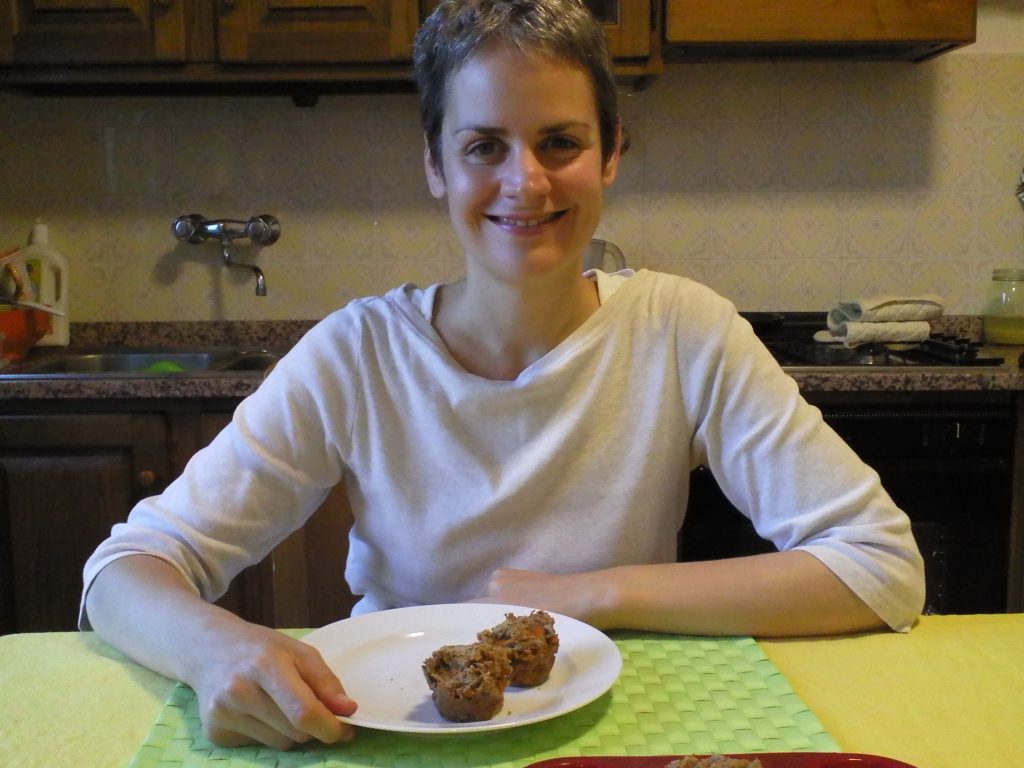
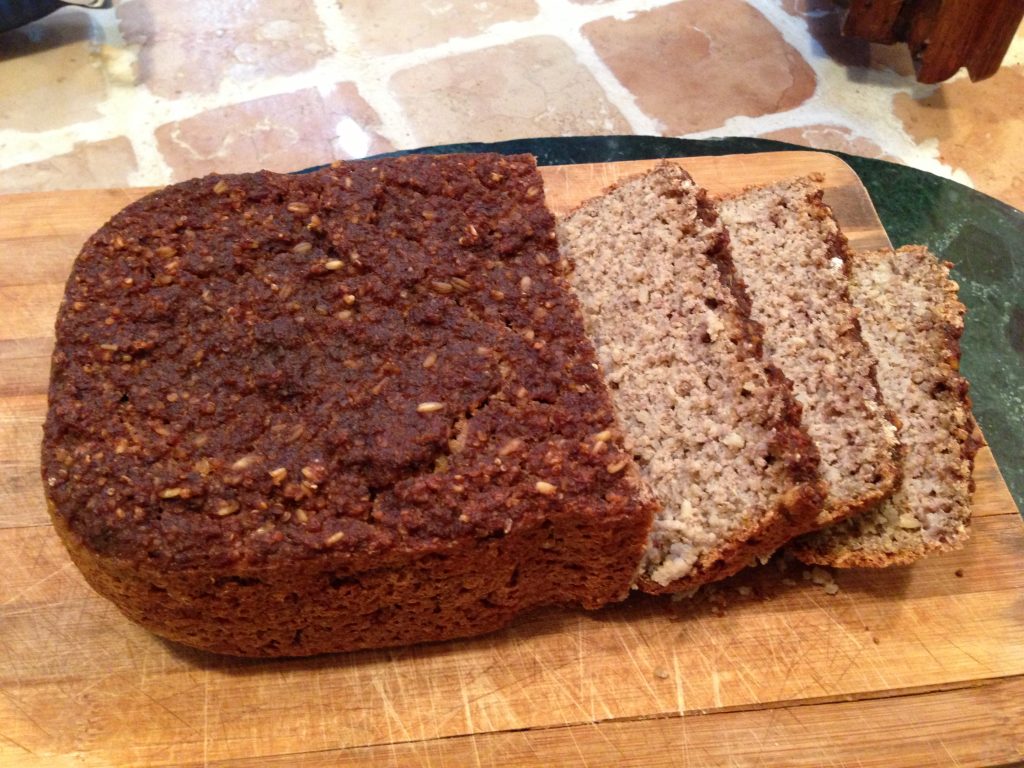
A year and a half later we look down on a round wooden table. Light falls across it from a wooden-framed window that leads the eye onto rolling green, English hills. There’s a baby boy, in a bouncer. nearby. On the table an array of bottles and packets surround a blender. She carefully portions out measurements into the jug, then takes a large container of raw goat’s milk from the fridge. She met the farmer before she gave birth, he delivers pints of it that fill up her freezer.
There have been a lot of shocks since the Italian kitchen on the lake. The shock of realising she and Rob needed to leave Italy in order to secure the best possibility of a natural birth. The shock of living back in England with Rob’s Mum. The shock of becoming a first-time Mum herself, aged almost 40. The shock of not being able to easily feed her baby with her own milk. The shock of so little sleep, pumping milk all through the night. All this had seen her cracking at the seams. Finally she has to admit that breast-feeing isn’t working and find another way.
The blender is the other way: the Weston Price Foundation baby formula made with unpasteurised milk. Making this fresh every day is her lifeline; the thing she can still do for her son, Gabriel, even if she can no longer supply the milk he needs herself. And the same blender continues to earn its keep as the months roll on. She cooks chicken and mackerel, blending them with unpasteurised jersey cream. She bakes sweet potato and carrot; whizzes them with raw butter. Collected apples from the laden tree in the front garden are stewed them and mixed with more cream for the little man’s delight.
From the gentle garden-of-England hills, we now move to a kitchen surrounded by salt spray, wind and the racous caw of seagulls. And let’s swap the blender for two slow cookers. And now watch her as she works the slow cookers just as hard as that blender, the world of the Gut and Psychology Syndrome diet pushing her kitchen creativity in a new direction. Because there was one more shock before she left her mother-in-law’s home: a terrifying ride in an ambulance to St Thomas’ hospital in London, where one-and-a-half-year-old Gabriel had emergency bowel surgery. Modern science saved her son’s life and then delivered him, and his exhausted parents, home to try and pick a way to recovery. They have started a new life on the coast of Cornwall, south-west England. A family decision to embark on the meat-focused, complex-carb-free, GAPS diet (which they will do for nearly 2 years) sees bone broth, meat stock and imaginative stews the central part of her creating.
The local farmers’ market staff love playing with Gabriel as she and Rob stuff the buggy and Rob’s 60-litre rucksack with local produce, preparing themselves for the, invariably rainy, seaside walk home. Once there, and dried off, she sets one slow cooker to work on stock from the bones of chickens raised on Louise’s farm, overlooking the rough Cornish waves, whilst the other one awaits scrubbed local vegetables, along with long-cook cuts of beef raised at Ian’s small-holding just a few miles north.
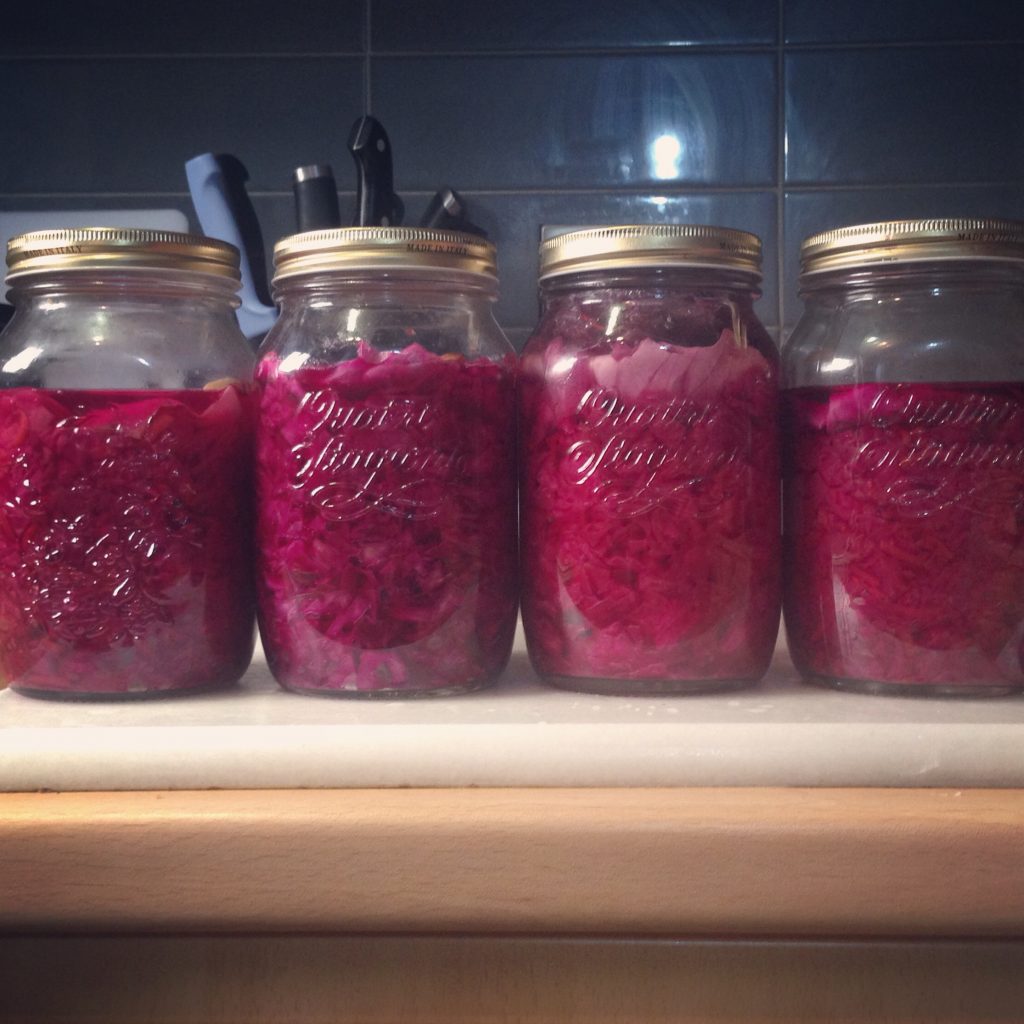
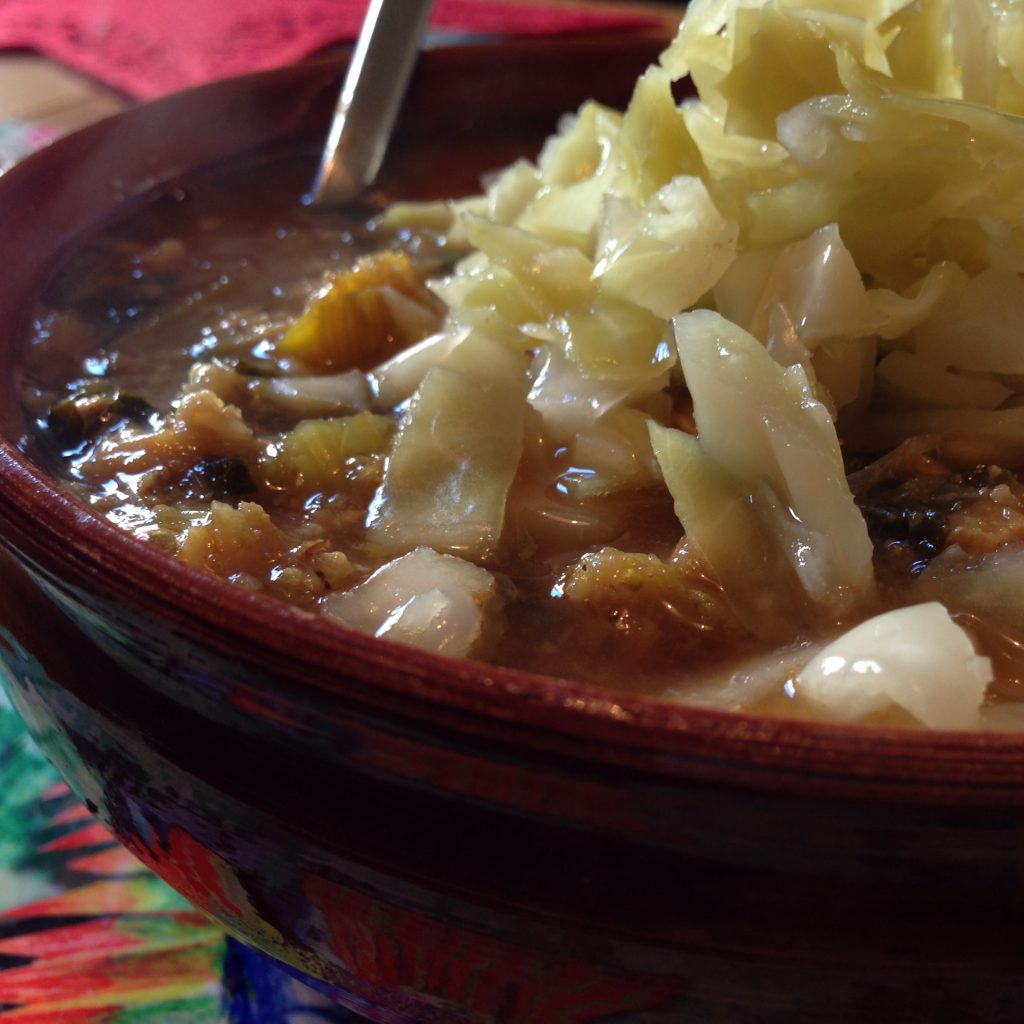
Sauerkraut, kefirs in abundance, sour cream; they are all still regulars on her work surfaces. On Sundays there’s often roast rare-breed pork, lard rendering and her son’s favourite, squash pancakes – a mammoth affair, where even two cast iron pans on the go at the same time can’t make dinner in less than 2 hours. And the cast iron sees a surprise ‘meatza’, with a convincingly sturdy base made from beef mince, to celebrate her and Rob’s first wedding anniversary.
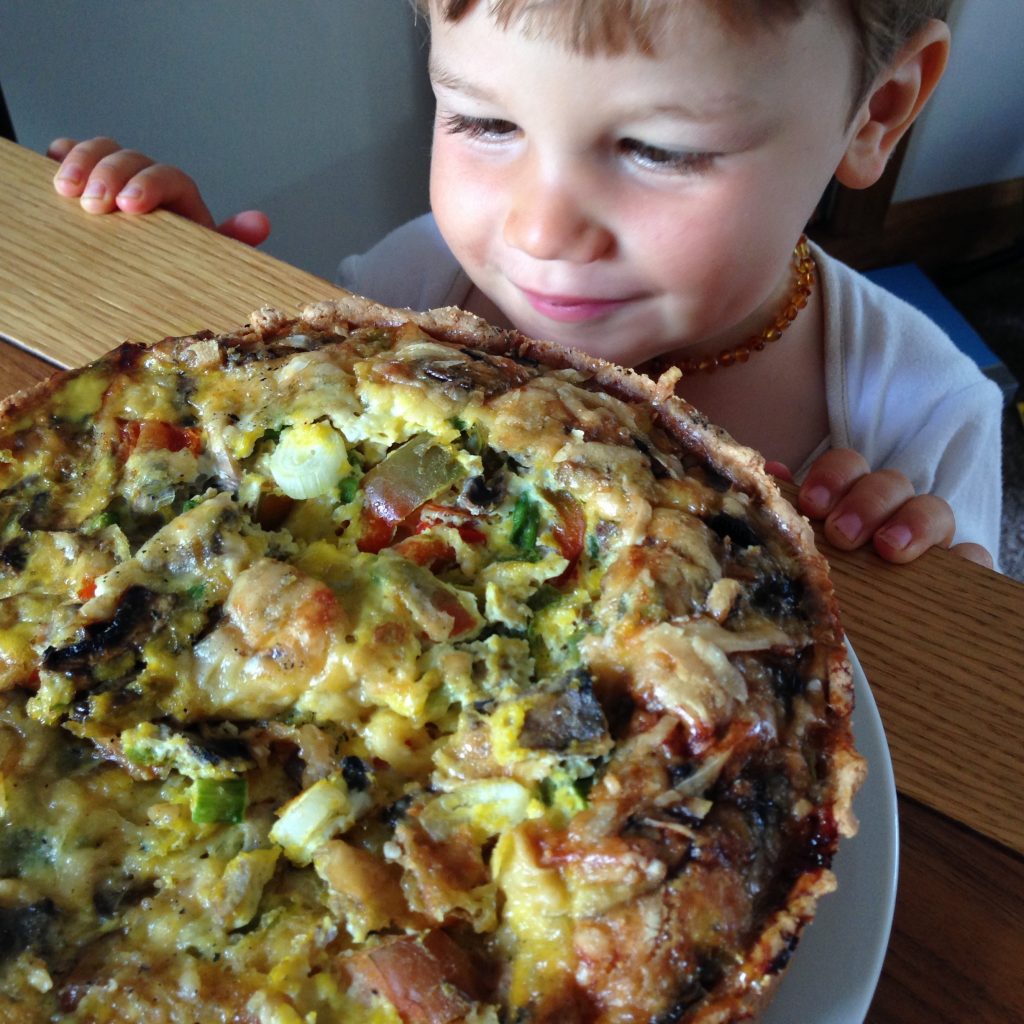

Between this and when we next see her wares, a new kitchen is created. A kitchen pieced together consciously, more out of love than any she has inhabited yet. She and Rob buy a house and for the first time ever get to work out their own cooking space. At its heart is a table. A table she fell in love with when she first spied it, in pieces, in a garage housing second-hand furniture. Rob had seen it too, and they were soon finding a local carpenter to piece it back together and fashion some wooden benches so they could sit. This table will make their kitchen and their home. It is the thing she will most cry over when, unbeknownst to her now, she closes the front door of their home for the last time, 18 months hence, when Rob and her, hastened on by Brexit, finally let go into her yearning to be back in Italy and move their family to Tuscany.
But before that, there is much more food adventure to tell. Because now comes the sourdough. It’s like it has been waiting for her her whole life. At first, they just flirt – a book from the library, a few online searches. And then, slowly but ever so deeply she feels herself unstoppably heading towards it, and before she knows it she is wrist-deep in flours, starters and fermenting dough. She reads, she bakes, she steams the oven, she slashes the dough. She finds an online mentor, an experienced baker, who tempers her frustration at imperfect loaves, telling her that new bakers don’t usually dive straight into sourdough, let alone the 100% wholegrain, UK flour loaves she’s set her heart on. Practise, practise, practise – as time goes on the happy moments where she catches her breath in surprise at the beautiful loaves start to outweigh the flat pancakes.
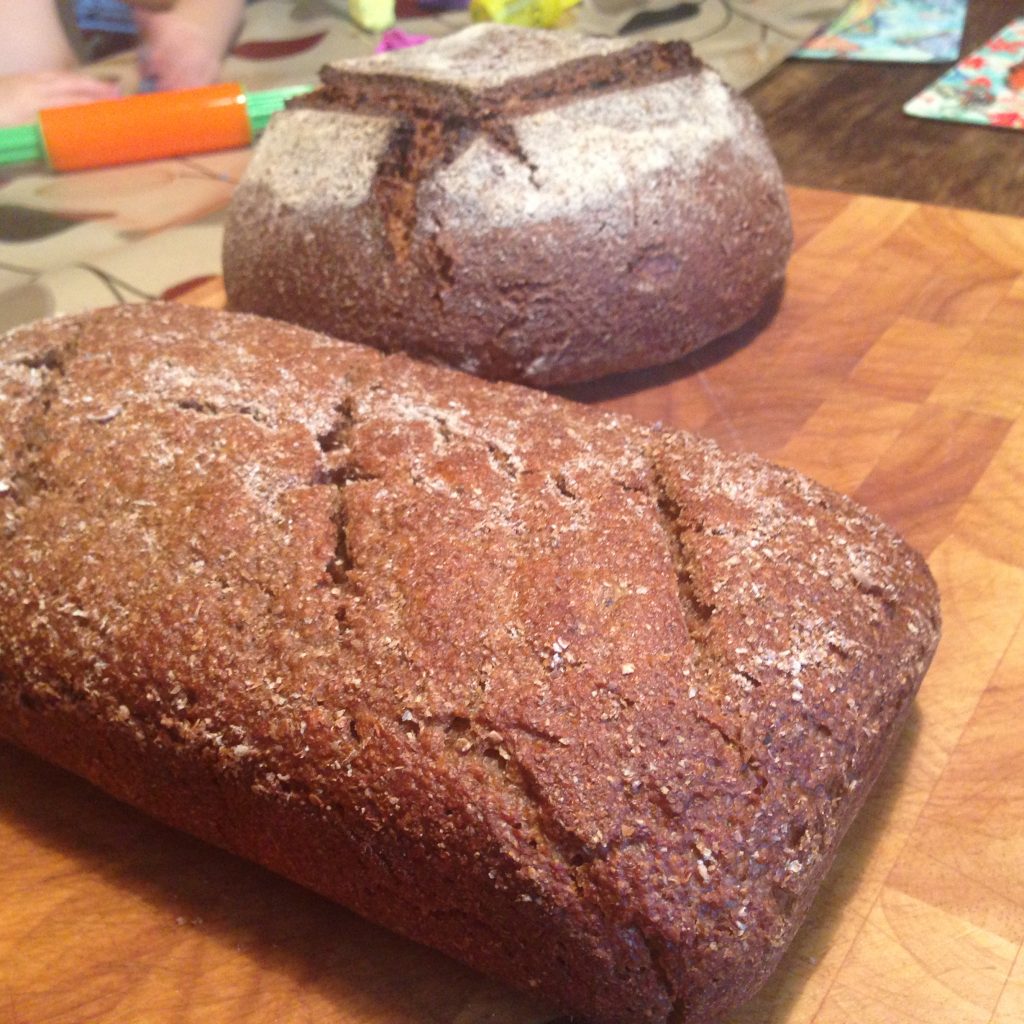
She cultivates this magic, this alchemy, this joy. This simple creation. She feels Hesta, the Greek God of the hearth, with her in her kitchen; quiet, always sustaining, always there at the stove, the centre of the home.
Two months before she’ll say goodbye to her family home, you see her looking down at a shared meal she’s created for friends spread on the beautiful table’s well-loved wood. Three loaves of 100% whole-grain sourdough breads. Each made, to a recipe she honed, using UK grown organic flour. The first, wheat, made into a boule and cooked on a terracotta stone, is deep, crusty and filling. The second, spelt, fermented solely using raw goat’s milk kefir has a delicate, sweet, creamy taste. The third, a Russian-style Borodinsky rye, is dark and soft, full of roasted caraway seeds and toasted malt. Next to these loaves, you’ll also see fermented cabbage and a fermented pear chutney, a local salad with specks of purple viola flowers she’s been growing, spicy sausage from the farm of one of the guests, avocado and local cheese. To the side there’s water kefir, fermented with rose water and petals or ginger, cardamom and lemon.
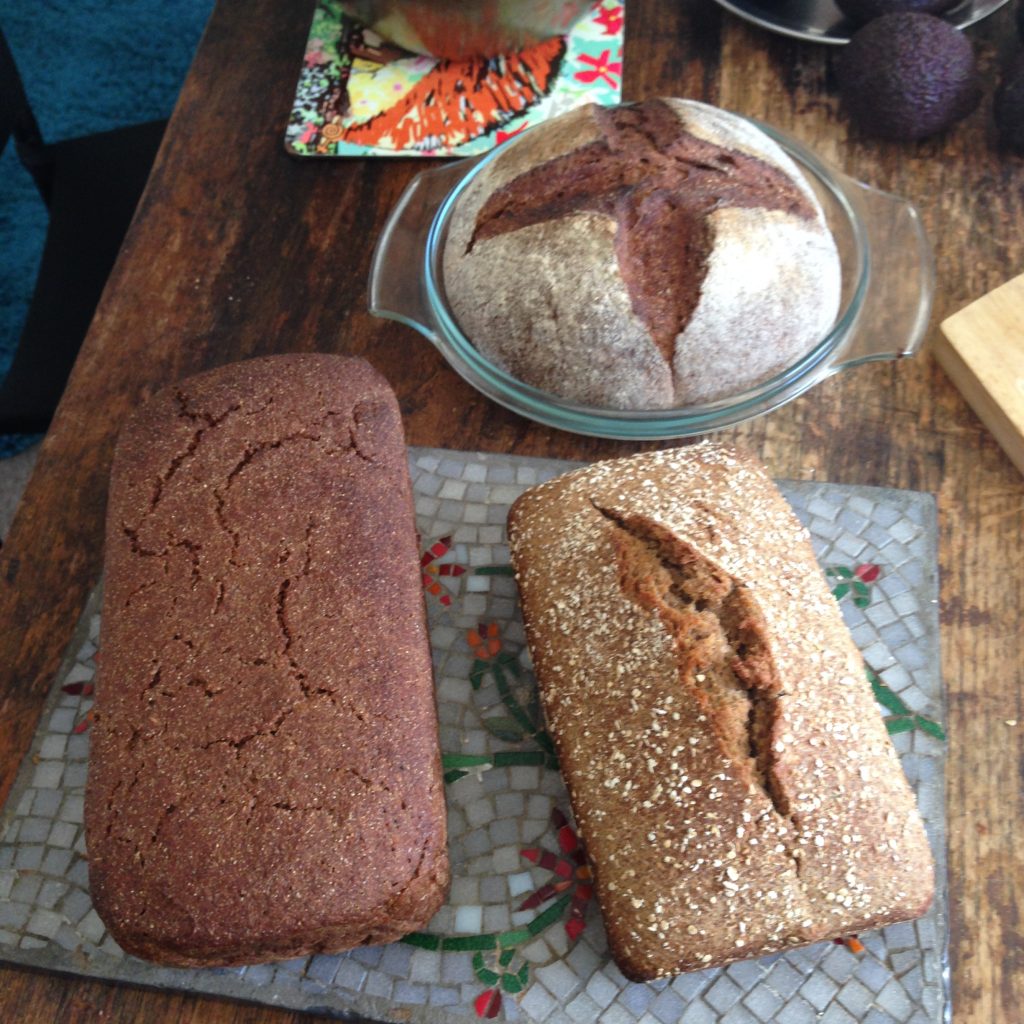
Finally, she’s starting to see that what she does, what she’s done in every kitchen she’s lived, isn’t ‘nothing special’. Finally, she’s starting to see that cooking is creativity. Finally she’s witnessing how fundamentally she feels about local, honest, real food.
With these new perspectives, and her sourdough starter in a jar in her hand luggage, she, Rob and Gabriel say goodbye to their life and their home in the UK and get on a plane to Italy.
And here she is. Here I am. With you. At my new Italian table. I’ll be cooking and sharing what I create as I and my family navigate a fresh start in this county. An education and friends for Gabriel, a legal business structure and new music career for Rob and hopefully some good food and a bit of sun through the kitchen window for me.
You might also like:
Letting Go of A Dream…I’m Leaving Italy – this, written 5 years after the above, shares openly my thoughts on leaving the the land I love.
50 Things an Ancestral Lifestyle has Taught Me – At 50 years old, I have written a piece sharing some of the lessons of my life.
Alison’s 140lb weight loss – The Ancestral Kitchen Podcast episode where I share this part of my journey.

Bring ancient grain baking into your kitchen!
Download my free 30-page guide with five healthy and tasty 100% ancient grains recipes.


Just landed on your website. can’t wait to try recipes!
Thank you Val. Let me know how you go!
Stumbled across your podcast and I’m hooked. I am not a full on homesteader by any means but I’m interested. I have chickens and quail and have started to make sourdough. (Only about 30 loaves in). I’m super interested in whole grains and more healthy breads and I am ready to binge all your podcast. I have never tried kombucha or kefir but my curiosity has been tickled. I made my first bone broth from a turkey carcass this weekend and am so proud. Lol! Thank you for sharing with us!
Hi Amy, so great to hear from you and about your exploits. Well done on the bone broth! Enjoy diving into our back catalogue and have fun 🙂
Ali did you have a website called “A Path Less Trodden” back in the day? I’m sure that I followed you when I was into raw vegan – which I loved but it could be so time consuming to prepare : (
So Ali, if it is you I’m back although I’m getting a bit long in the tooth now but I’m still anxious to learn and who doesn’t love good food (and wine ;))? I’m signed up!
Hi Angela,
I did indeed have a website called Path Less Trodden! Was it really that long ago 😉 Anyway, I’m glad you found me…hello again 🙂
Alison
Alison,
Your story is so inspiring. I’m 32 and I also have PCOS. I was only getting my cycle once a year, if that. About a year and a half ago, I started my journey healing my PCOS naturally so my husband and I could have a child someday. I was also told I will never have a child or heal my cycle on my own.
My cycle isn’t monthly yet, but it is more frequent. My problem was that I wasn’t being consistent with my eating habits. We’re doing much better now! I’ve lost weight and my skin is clearer than it’s ever been. I’m working on my career as an artist with plans for an artist residency in Japan next year. My focus on the trip will be on how disconnected humans have become from nature. Expressing how we eat and our addiction to our phones have truly torn us away from this earth, making us sick mentally and physically.
Hopefully, by the time I get back from this trip, my husband and I will be ready for our baby!
The podcast you and Andrea put together is so helpful and inspirational. Thank you for all that you do.
Hi Bre, Your words gave me goosebumps. Fantastic and keep going! What a wonderful opportunity for your art and creativity. Keep in touch and let me know how it, and your fertility journey, go. Alison